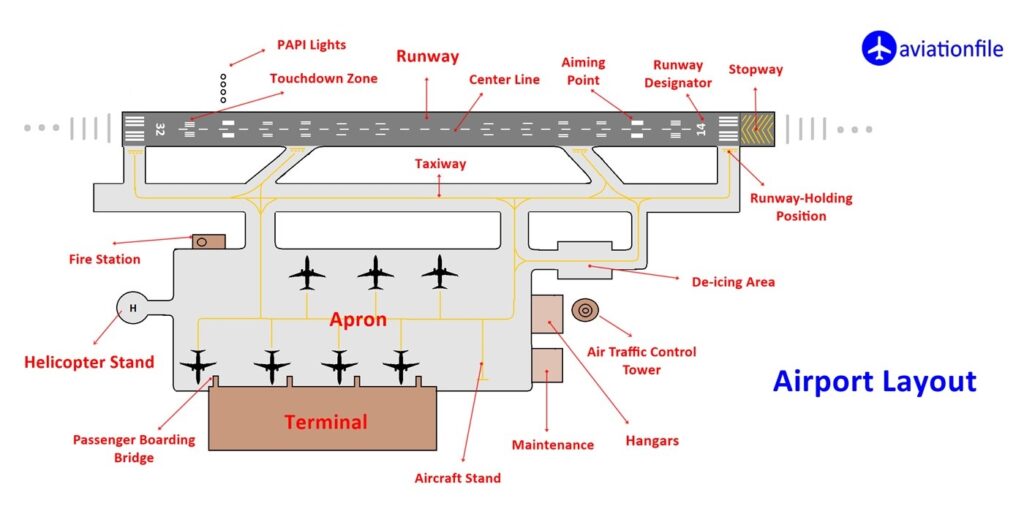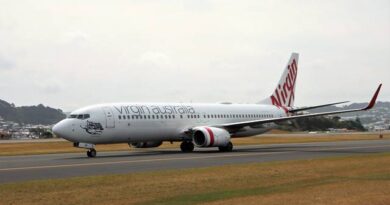Airport Apron Design: What It Is and Why It Matters
What is an Apron in Aviation?
An airport apron is a paved area where aircraft park, load and unload passengers and cargo, and refuel. Aprons are typically located adjacent to airport terminals, but they can also be located in other areas of the airport, such as near cargo facilities or maintenance areas.
Aprons are essential for the safe and efficient operation of airports. They provide a space for aircraft to maneuver and park without interfering with other aircraft or airport operations. Aprons also provide easy access to aircraft for passengers, cargo, and ground support equipment.
Airport Apron Design Principles
Airport apron design is a complex process that takes into account a variety of factors, including:
The types and sizes of aircraft that will use the apron
The volume of traffic on the apron
The need for safety and security
The need for efficiency and convenience

Some of the key principles of airport apron design include:
Safety: Aprons must be designed to minimize the risk of accidents and injuries. This includes providing adequate clearance between aircraft and between aircraft and other objects on the apron. It also includes providing adequate lighting and signage.
Security: Aprons must be designed to prevent unauthorized access to aircraft and sensitive areas of the airport. This may include using fences, gates, and security cameras.
Efficiency: Aprons must be designed to allow aircraft to move around and park quickly and easily. This may include providing multiple taxiways and parking positions. It also includes providing adequate space for ground support equipment.
Convenience: Aprons should be designed to be convenient for passengers, cargo, and ground support personnel. This may include providing easy access to aircraft and to terminal facilities. It also includes providing adequate lighting and shelter.
In addition to these general principles, there are a number of other factors that must be considered when designing an airport apron. For example, the design of the apron must be compatible with the design of the airport terminal and other airport facilities. It is also important to consider the impact of the apron on the surrounding environment.
Examples of Airport Apron Designs
There are two main types of airport apron designs: open apron and closed apron.
Open apron: In an open apron design, aircraft park directly next to the terminal building and passengers walk directly across the apron to board the aircraft. This type of design is common at small airports.
Closed apron: In a closed apron design, aircraft park on the apron and passengers board the aircraft through jet bridges. This type of design is common at large airports.
There are also a number of hybrid apron designs that combine elements of open and closed apron designs. For example, some airports have aprons with both jet bridges and open parking positions.
The type of apron design that is best for a particular airport depends on a variety of factors, including the size of the airport, the volume of traffic, and the types of aircraft that use the airport.
Conclusion
Airport aprons are essential for the safe and efficient operation of airports. They provide a space for aircraft to maneuver and park without interfering with other aircraft or airport operations. Aprons also provide easy access to aircraft for passengers, cargo, and ground support equipment.
Airport apron design is a complex process that takes into account a variety of factors, including safety, security, efficiency, and convenience. The type of apron design that is best for a particular airport depends on a variety of factors, including the size of the airport, the volume of traffic, and the types of aircraft that use the airport.
References and Further Reading:
Federal Aviation Administration (FAA) Advisory Circular 150/5300-13, Airport Design: This document contains the FAA’s standards and recommendations for airport design, including apron design.
National Academies of Sciences, Engineering, and Medicine (NASEM) Apron Planning and Design Guidebook: This guidebook provides comprehensive guidance on all aspects of apron planning and design, including design principles, safety considerations, and environmental considerations.
AIP-USA Chapter 150, Airport Design: This chapter of the FAA’s Aeronautical Information Publication (AIP) provides detailed technical specifications for airport design, including apron design.
International Civil Aviation Organization (ICAO) Annex 14, Aerodrome Design and Operations: This ICAO document provides international standards and recommendations for aerodrome (airport) design and operations, including apron design.


